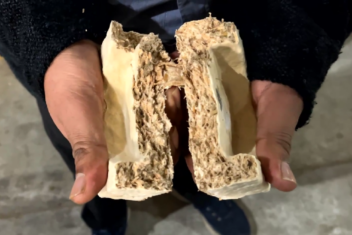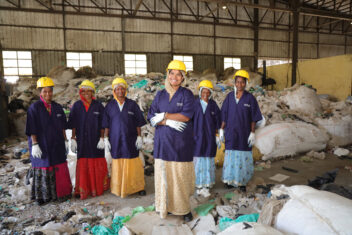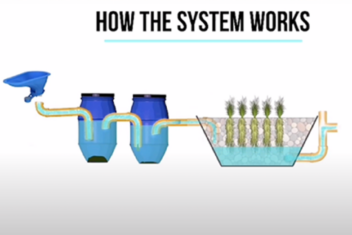India’s dire plastic problem
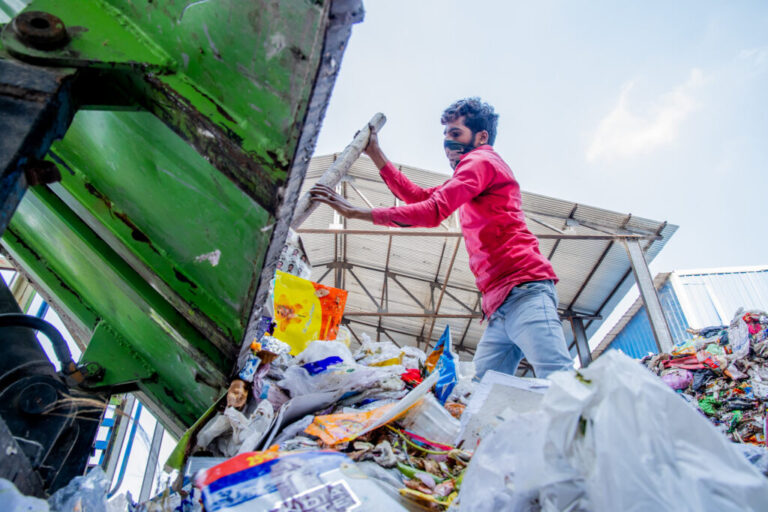
More than 11 million tonnes of plastic waste are dumped in India annually
As with much of the world, India’s growing plastic pollution is reaching a critical mass. According to UNDP, India creates 15 million tonnes of plastic waste per year, and only 25% of this is recycled. The unmanaged rest most often ends up dumped in the environment resulting in poor health and environmental impacts.
According to Ashwini Choubey – India’s Minister of State for Environment, plastic waste generation has doubled in the last 7 years alone (since 2015). Besides, India belongs to the top five countries with the highest rate of mismanaged plastic waste that gets dumped into waterbodies and the ocean. This has far-reaching impact on both regional and global environmental issues. These numbers are ringing the alarm of the urgent need to develop efficient and affordable waste management systems. Why? The world is beginning to understand the ways in which plastic waste pollution can cause severe health problems for local people and the surrounding environment. What can be done about this?
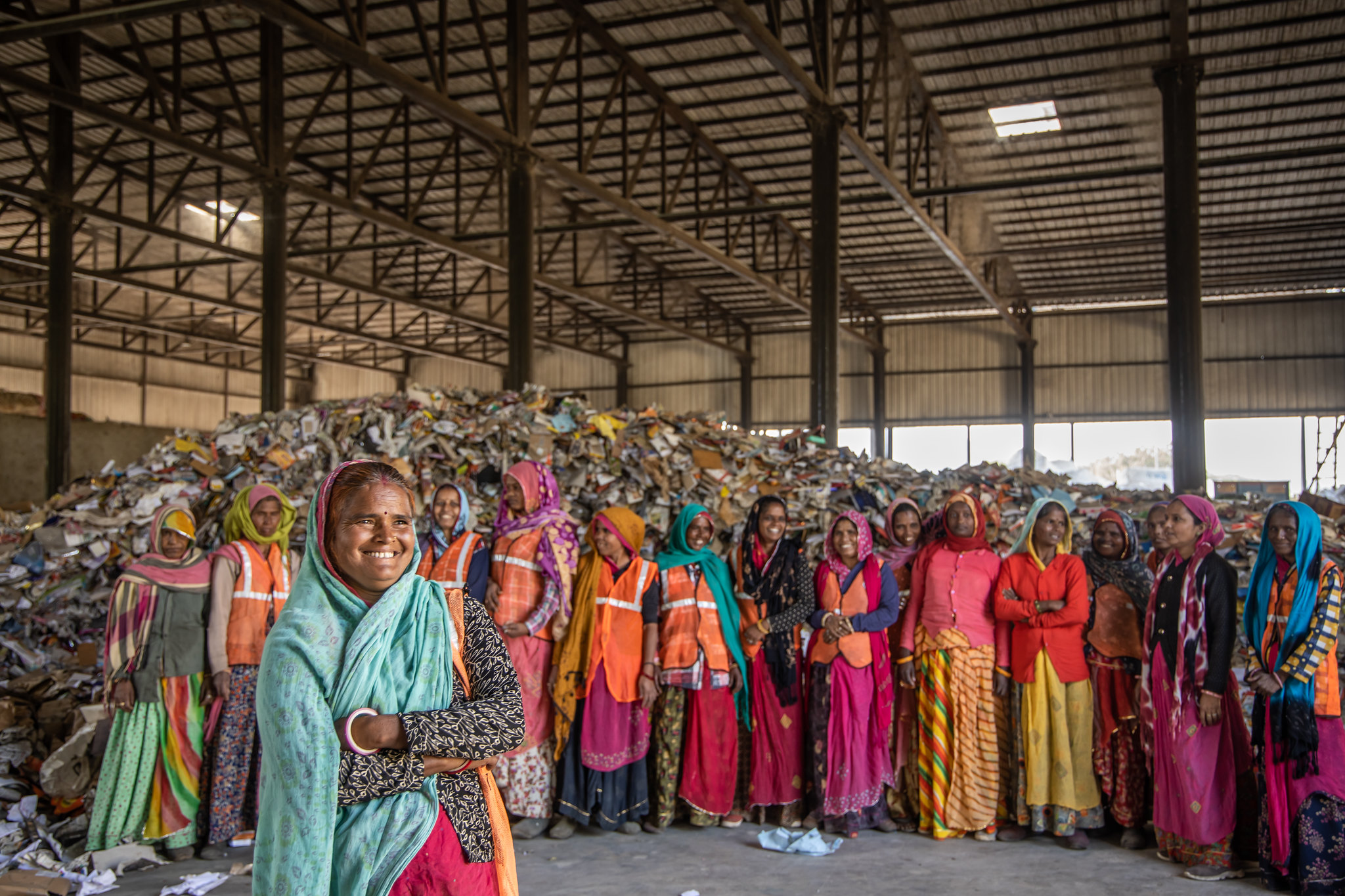
Joining the fight against plastic pollution
One notable team to joining the fight against plastic waste is our FINILOOP programme. FINILOOP stands for Financial Inclusion and Improved Livelihoods Out of Plastics, and is partnering with cities to reduce, redesign and improve plastics management. By stimulating the usage of less plastic, looking for alternatives and keeping plastic longer in the ‘loop’, we are building on circularity to strengthen local markets.
FINILOOP has been operating in partnership with FINISH Society and Polyplex in Udaipur, India, since 2018. Within a few years, we together created 150 jobs for local people and prevented 2,000 metric tonnes of plastic from being dumped or burned in the open. In addition, 50 waste pickers were able to increase their income. As a result, Udaipur has achieved a higher place in the National Clean City ranking (from 117 in 2019 to 54 in 2020) and will continue leading in the fight against plastic.
What is needed to address the challenge of plastic waste?
Acknowledging the problem, the government of India is striving to build partnerships to implement effective solutions to tackle their plastic waste pollution problem. With WASTE’s experience and expertise in integrated waste management, we have been working with partners to develop accessible and scalable solutions, especially addressing a key bottleneck of low-value, difficult to recycle multi-layer plastics (MLPs).
According to India’s Plastic Waste Management (PWM) Rules 2016, an MLP is “any material used for packaging and having at least one layer of plastic as the main ingredient in combination with one or more layers of materials such as paper, paper board, polymeric materials, metalised layers or aluminium foil, either in the form of laminate or co-extruded structure.” Urban governance researcher at CAG, Gayathri Devi S., presents the MLP problem perfectly in a piece published in 2020: “MLPs are a favourite material for the food industry as it protects sensitive food products and hence longer shelf life. The packaging industry used to have materials such as glass, metal or PET bottles. But each of these materials has its own limitations for eg: metal is not transparent, glass is fragile and heavy for transportation, PET does not work as a good barrier of oxygen for some products…In contrast, MLP is lightweight, makes transportation easy, and is also graphics friendly…MLPs have become a ubiquitous part of the lifestyle of consumers, regardless of their buying power. It is present in products everywhere [and] comes in all sizes: from a shampoo sachet to large packets of chips. The lightweight and small size of MLPs, make them almost omnipresent, easy to throw away but difficult to collect. The eventual end of this material is therefore as litter, in a landfill or waterways where it often mistaken as food by some animals.”
What about after MLP-packaged items have been consumed?
Devi continues: “The recycling process of MLP in itself is cumbersome because the plastic has to be cleaned thoroughly after it is collected and then, separated based on its type. Hence, the only way to process MLPs to get it out of sight is incineration or waste to energy plants. The incineration plants are sold to the public as a better alternative to landfills. However, incineration releases dioxins and one-fourth of the incinerated trash remains as toxic fly ash which ends up in the landfills. The current solutions that are being touted to treat the fly ash are to use it in making paver blocks or use it for road construction. These solutions are being proposed without a backup of any scientific studies and this fly ash can pollute the air, water and soil for the next several generations.”
What’s next?
FINILOOP will not stop in Udaipur. In 2022, our FINILOOP programme will start up in more cities in India, based on these earlier successes. Furthermore, the partnership is focusing on finding real solutions to the critical MLP challenge. The future is bright—we expect to generate more sustainable solutions and contribute to a healthier future in India and beyond.
